Warszawa 13-06-2024
EMU E91 / E51 / EW51 is the first Polish Electric Multiple Unit, which was produced and operated in the period 1936-1979. In 1936, the train was designated as the E91 series. After World War II, the designation was changed to E51, and in 1959, to EW51. The train was manufactured by the Lilpop, Rau and Loewenstein company in Warsaw (mechanical part of the motor wagons) and by Hipolit Cegielski Poznań and L. Zieleniewski in Sanok (mechanical part of the marshalling and trailer wagons). The electrical equipment was provided by the Metropolitan Vickers & English Electric Company. The production of trains was planned for several years, but in 1939, the Germans attacked the Republic of Poland and production was interrupted. A total of 76 trainsets were produced.
EMU E91/EW51 consists of three carriages and is adapted to serve passengers on high platforms because there are no additional steps under the doors. The trains were intended to serve suburban traffic in the Warsaw agglomeration. The carriages had seats for Class 2 and Class 3 passengers and were divided into non-smoking and smoking sections.
Only one EMU set, EW51-36, has survived. Currently, it is the property of the museum in Warsaw “Stacja Muzeum”. The last renovation for the exhibition was carried out at ZNTK in Mińsk Mazowiecki and was completed in January 2019. On the night of March 5/6, 2021, the train was transported to Warsaw to the museum.
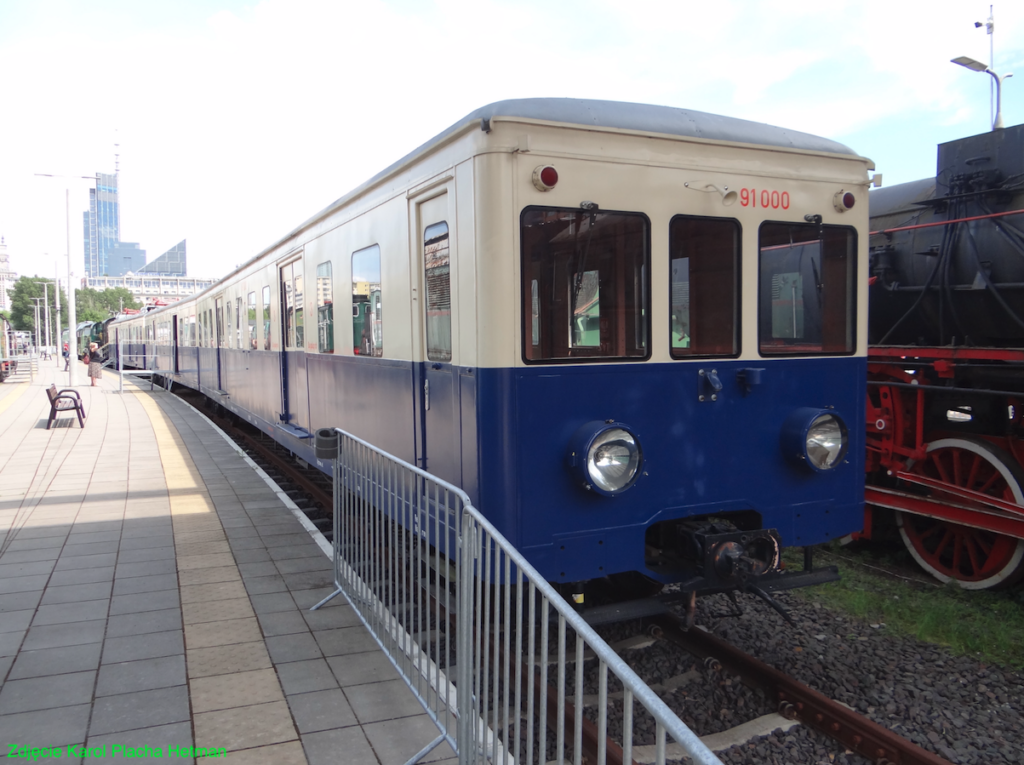
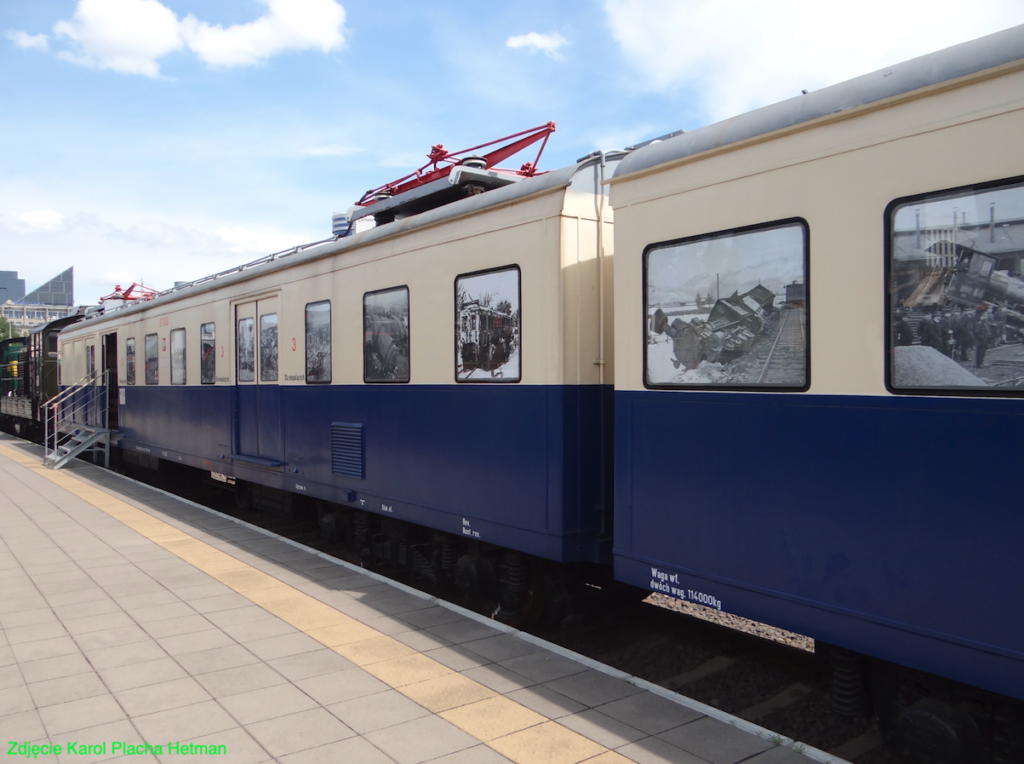
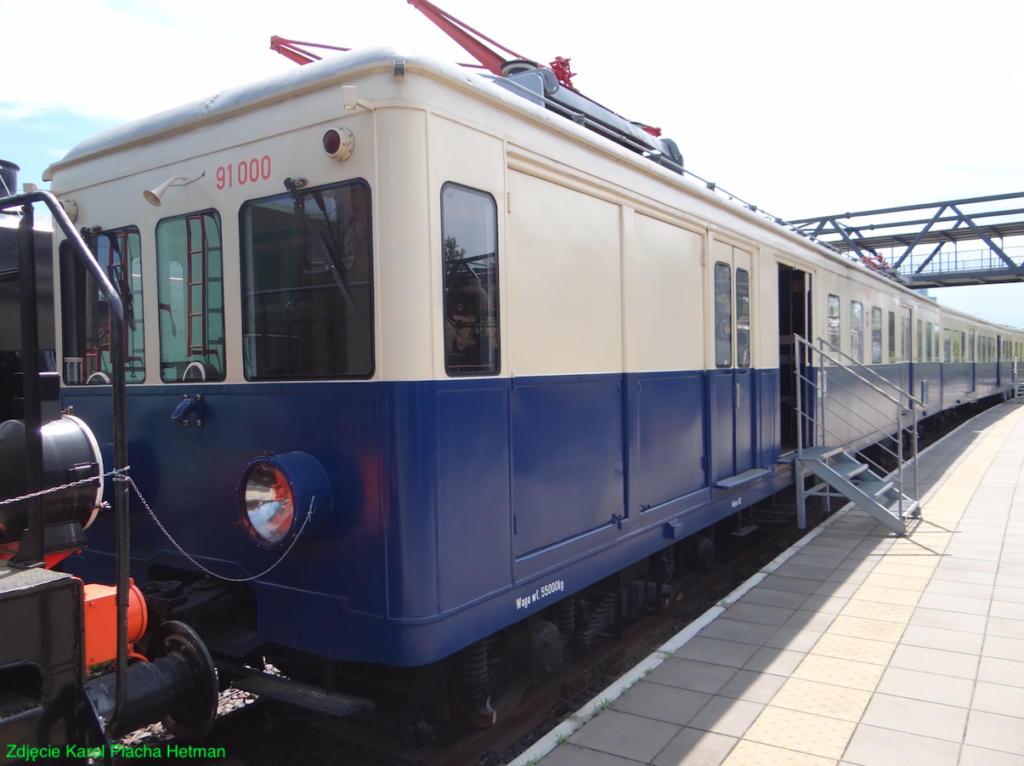
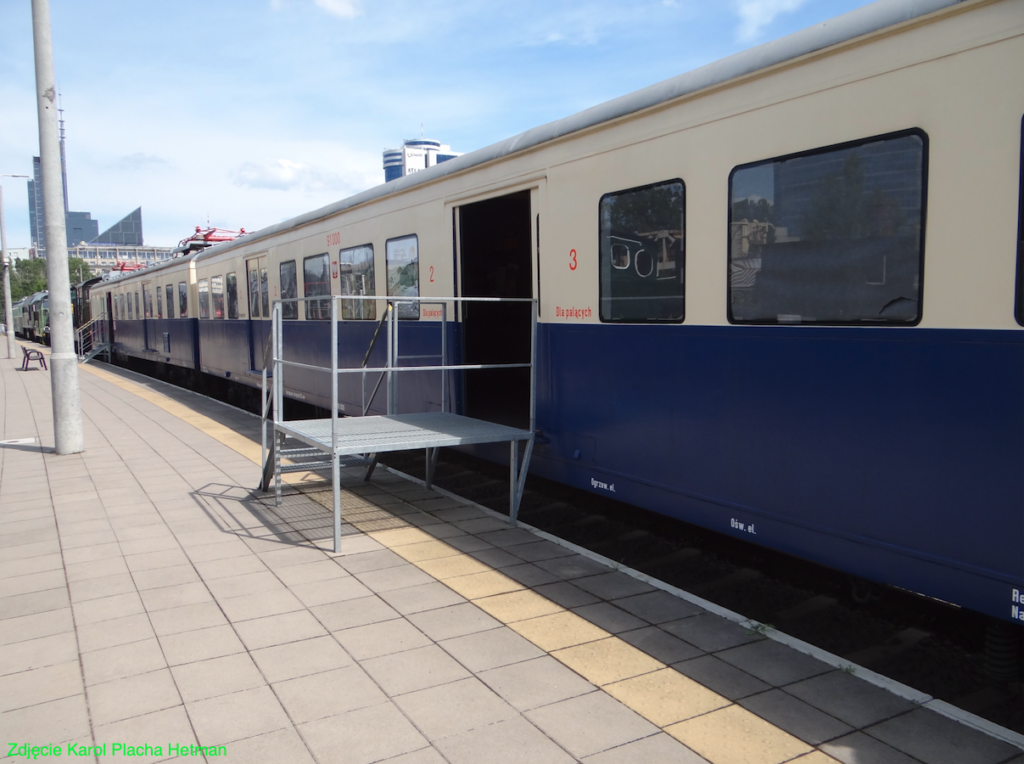
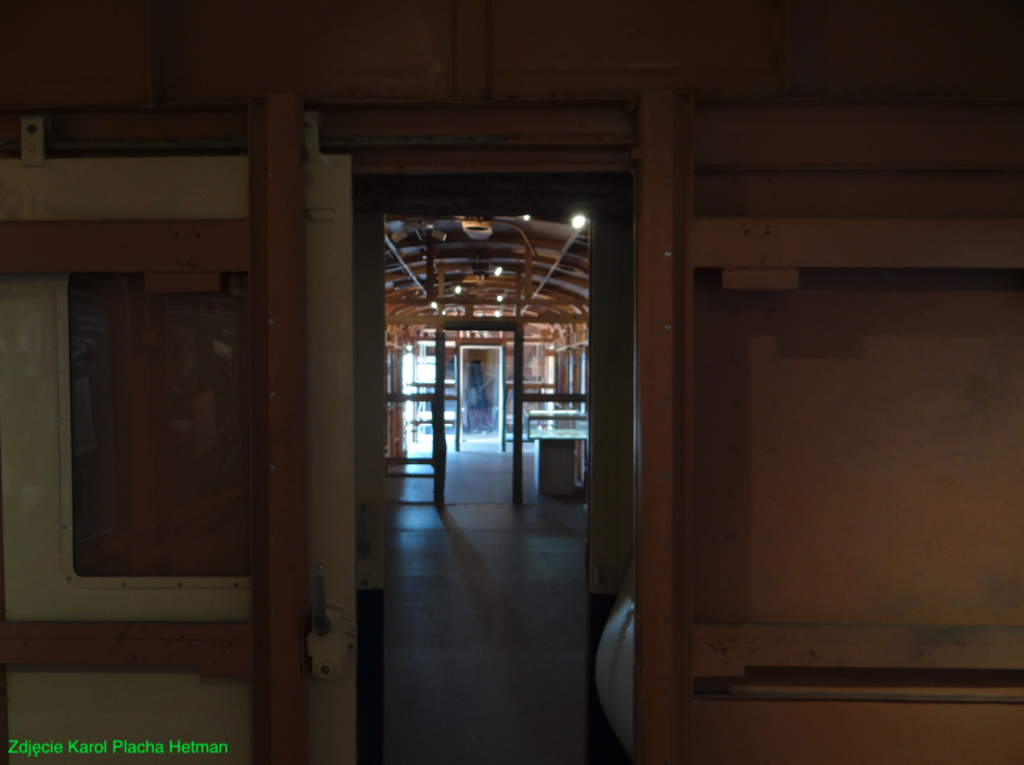
The history of the E91 / E51 / EW51 EMU construction.
In the 1930s, it was decided to electrify the Warsaw railway junction. It was mainly about the electrification of the cross-town railway, which runs in a tunnel, and steam traction causes a lot of smoke. On August 2, 1933, an agreement was concluded with British companies for the supply of sets of electrical equipment; Metropolitan Vickers & English Electric Company. Work related to the development of the structure of electric multiple units was undertaken in 1934 by the Electrification Management of the Warsaw Railway Junction, in cooperation with the 6th Mechanical Department of the Ministry of Communication and future rolling stock factories. The main designer of the mechanical part was engineer T. Owczarek from Department VI. It was decided that the train would consist of three carriages. The first wagon is both an engine and a control wagon. There are two electricity collectors on its roof. The wagon was placed on two bogies equipped with engines. The second wagon is a trailer wagon. The third wagon is the marshalling wagon.
In 1935, a prototype motor wagon was built at the Lilpop, Rau and Loewenstein plants, which then engaged in serial production of the mechanical parts of motor wagons.
The mechanical part of the marshalling and trailer wagons was manufactured by H. Cegielski SA in Poznań and L. Zieleniewski, Fitzner & Gamper in Sanok. The installation of electrical equipment delivered from England was carried out under the supervision of English specialists. The motor wagons received PKP series designations: ECmx (E: electric, C: second class, m: motor with pantograph, x: four-axle) and registration numbers from 91 001 to 91 076; trailer wagons: EBCbdxx and driver wagons: EBCbdsxx, with registration numbers from 92 001 to 92 076.
The first EMU units were handed over to PKP in July 1936. They were publicly presented during the metal and electrical industry exhibition, which began on August 23, 1936, at Pole Mokotowskie in Warsaw. The first train journey on the Pruszków – Warsaw – Otwock route took place on December 15, 1936. At the end of 1937, PKP had 60 complete EMUs. Another 16 trains were ordered and they were built until 1939.
A plan was created to use 6 motor wagons as electric locomotives, which received the numbers E301 – E306. When the next sections were electrified, the locomotives were to return to their original role.
EMU E91 / E51 / EW51 design.
EMU E91 consists of three wagons that are permanently connected and can only be disconnected in workshop conditions. Automatic Scharfenberg couplers were installed on the heads of the trains. The E91 EMUs were equipped with multiple control, which enabled the connection of up to three E91 EMUs.
The first wagon is a motor wagon. First, a driver’s cab was installed, equipped with train control devices. The electrical compartment is located behind the cabin. HV (high voltage; 3 kV) and LV (low voltage; 110 V) electrical equipment was installed here. The low voltage of 110 V DC, obtained from the converter, was used to power the auxiliary and timing circuits and to charge the batteries. The batteries were placed under the wagon frame. The motor car also has a luggage compartment and a compartment for transporting mail. The rest of the carriage is intended for travelers. Two pantographs were mounted on the roof of the wagon. Usually, the second pantograph operated in relation to the direction of travel. In difficult starting conditions, for example when the network was icy, the driver activated both pantographs. The wagon body was placed on two two-axle bogies. Double springs and fork-guided wheel sets in rolling bearings were used. Each drive bogie has two traction motors. Total 4 engines. The engine suspension is of the tram type, i.e. “by the nose”. Single-stage gear transmission.
The second wagon is a trailer wagon. The body of this wagon is mounted on one two-axle bogie and on a Jakobs system bogie together with the third wagon. A common Jakobs bogie was used between the trailer and the distribution (control) wagon, which reduced the total weight of the E91 unit.
The third wagon is the marshalling wagon. At its end there is a driver’s cabin, which is equipped with train control devices. The use of two driver’s cabins, at both ends of the train, enabled the same starting and driving of the electric unit in both directions of travel without the need to detour the train.
The wagon bodies were made of steel sheets and profiles, which were connected partly by welding and partly by riveting. The structure has been insulated and soundproofed. The interior was lined with veneer boards and plywood, which were protected against moisture. Each carriage is equipped with two pairs of double-leaf doors that slide sideways. The doors are automatic, controlled by a pneumatic system and activated by the train manager. Additionally, the first wagon received one pair of double-leaf service doors that opened ajar outwards. There are no additional steps under the door. Passengers had wooden, profiled benches at their disposal. There were no headrests. The warehouse was heated electrically, powered by 3 kV DC mains voltage.
The Second World War.
After losing the defensive war, Poland was occupied by the Germans. All Polish railway networks and rolling stock were incorporated into the Germanic railways. In Warsaw, the war damage was quickly repaired and railway traffic for the needs of the Germanic army began. Due to war damage, the number of electric locomotives that were used to pull freight trains through the cross-town tunnel was small.
Therefore, 10 E91 electric multiple units were selected, from which motor wagons were taken. These wagons were modified and connected in pairs. Additionally, they were loaded with concrete slabs to obtain greater weight. Most of the side windows were removed and sheet metal or plywood was inserted. The Scharfenberg coupler was removed from the fronts of the locomotives, replaced with a classic screw coupler and buffers were installed. A pneumatic hose was connected to the braking system.
This is how five locomotives of a new type were built, which the Germans designated from Ostbahn 01 to Ostbahn 05 (Eastern Railway). Other sources say that the Germans also used the designations E301 – E305 or M431 – M438. Post-war information states that the Ostbahn 03 locomotive was scrapped in 1957 at the MD Olszynka Grochowska locomotive depot.
1945 year.
After World War II, some of the remaining trains were renovated and given the new E51 series designation. In 1959, the designations of the PKP rolling stock were changed and the units were designated EW51.
Ten trains were renovated in the period 1953–1954 in the GDR at the Waggonbau Görlitz plant. The modernization was significant because the Jakobs system bogies were removed and each wagon was placed on two individual bogies. This increased the mass of the EMU and resulted in lower acceleration when starting. The trains rebuilt by the Germans were marked E52 series, and in 1959 they were changed to EW52.
In the 1940s and 1950s, 36 EMU trains were renovated and operated by PKP until 1970-1979.
EMU EW51-36.
Only one EW51-36 train has survived. In 1975, the last operational renovation was carried out at ZNTK Mińsk Mazowiecki. In 1979, the train was decommissioned and awaited its fate. In 1980, the train was handed over to the Railway Museum in Warsaw. In 1986, the composition was painted in Mińsk Mazowiecki. Currently (2024) the train is owned by the museum in Warsaw “Stacja Muzeum”. In the 1990s, the train was transported to a siding at the Warszawa Grochów station, where no renovation was carried out and the train became a target for vandals. All the windows were broken, headlights were destroyed, doors were broken and painted with hideous pictures. In 2014, the train was deposited with the Praga Communication Museum in Warsaw and transported to the siding of the Warszawa Praga station. In 2017, EMU EW51-36 was transported to Mińsk Mazowiecki. The last renovation for the needs of the exhibition was carried out at ZNTK Mińsk Mazowiecki and was completed in January 2019. On the night of March 5/6, 2021, the train was transported to Warsaw to the open-air museum. The warehouse has original external painting. The bogies were also renovated so that the train could be pulled safely. Inside, the wagons have no equipment and you can see the structure of the wagon boxes, which are protected with anti-corrosion paint. The composition can be seen inside.
Data T-T EMU EW51:
Service weight 114,000 kg. Length 63.10 m. Wheel diameter 1.00 m. Electric traction 3 kV DC. Traction engines 4 x 108 kW. Continuous power 432 kW. Engine type PK601. Design speed 100 km/h. Braking system: Westinghouse pneumatic and electro-pneumatic brake. Number of seats 233. Maximum number of passengers 536.
Written by Karol Placha Hetman
